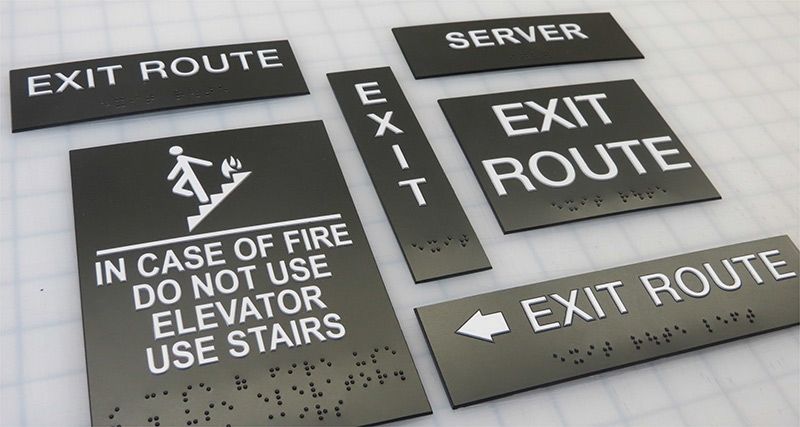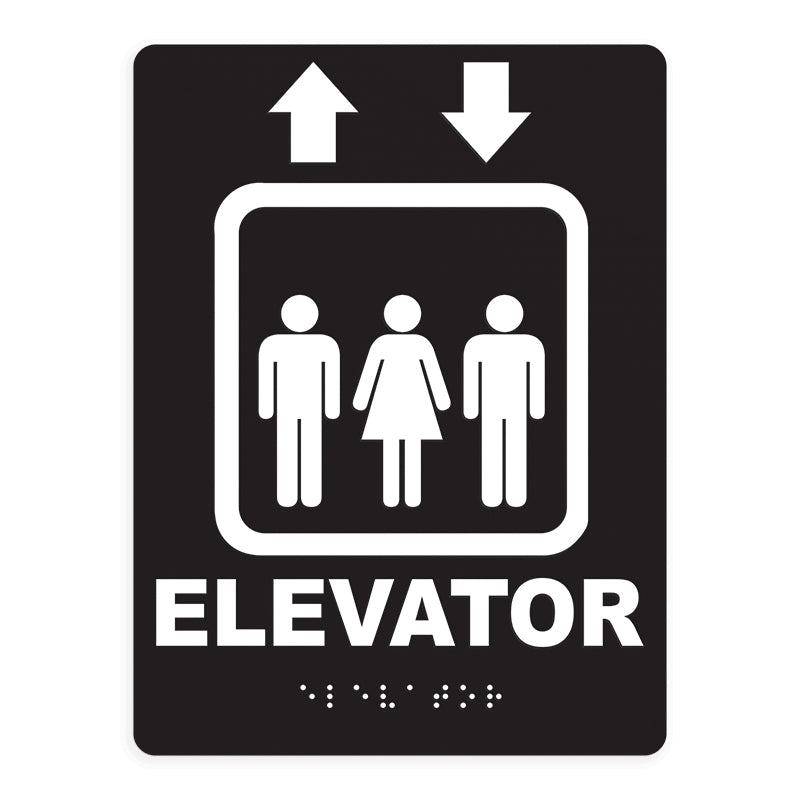Discovering Innovative Styles for Effective ADA Signs
Discovering Innovative Styles for Effective ADA Signs
Blog Article
ADA Signs: Guaranteeing Access and Compliance in Public Spaces
ADA signs plays a vital duty in guaranteeing access and conformity within public areas, dramatically adding to a comprehensive atmosphere for individuals with disabilities. As we check out the nuances of ADA signs, from responsive features to develop details, it's essential to take into consideration how these elements integrate to promote the legal rights of all customers.
Significance of ADA Signs
In modern-day culture, the relevance of ADA signs expands beyond plain conformity with legal mandates to symbolize a commitment to inclusivity and ease of access for all individuals. These indications are crucial in developing atmospheres where individuals with specials needs can browse public rooms with the very same convenience and self-reliance as those without handicaps. By supplying clear and standard details, ADA signage makes sure that every person can access facilities, solutions, and details without obstacles.
The relevance of ADA signage exists in its capability to enhance the high quality of life for people with handicaps by advertising equal gain access to. It eliminates the challenges that may otherwise hinder their capability to participate fully in community life. Additionally, these indications serve as noticeable indicators of an organization's commitment to diversity and equality, mirroring broader societal worths that champion the civil liberties and dignity of all people.
Moreover, ADA signage plays a vital function in public safety. By leading individuals to exits, toilets, and various other crucial facilities, it guarantees that all people, no matter physical capability, can evacuate safely throughout emergencies. In summary, ADA signs is not just a regulative requirement yet a powerful device for promoting a fair and inclusive society.
Crucial Element of Conformity

Placement is important; indicators must be installed in places that are easily visible and reachable. Commonly, signage ought to be mounted in between 48 and 60 inches from the ground to guarantee accessibility for both standing and mobility device users. Tactile aspects, such as Braille, are vital for individuals with aesthetic impairments, offering crucial info in a non-visual format.
High-contrast shades in between the message and background are necessary to improve readability for individuals with low vision. The ADA mandates details contrast ratios to guarantee clarity. In addition, personality dimension is a key consideration, with minimum elevation needs dictated by the viewing distance to make sure readability from numerous angles.
Design Considerations for Availability
Designing easily accessible signage needs a thorough approach to guarantee it meets the demands of all users, specifically those with impairments. The size of the message is equally vital, with ADA guidelines suggesting a minimum elevation based on checking out distance to guarantee readability.
Contrasting shades between text and background are essential for presence, specifically for individuals with visual problems. A high comparison proportion aids differentiate the message from its background, boosting readability under various lights problems. Furthermore, responsive elements, such as Braille and elevated personalities, are vital for people that are blind or have reduced vision. These elements must be found at a constant elevation and setting to make certain simple gain access to and understanding.
Furthermore, the positioning of signage plays a significant duty in accessibility. Indicators must be mounted in areas that are unhampered and easily reachable. Making certain that signs is placed at ideal heights and angles enables all customers, consisting of those using wheelchairs, to engage with them properly.
Usual Mistakes to Prevent

One more widespread mistake is the incorrect positioning of signs. ADA guidelines define accurate elevation and area requirements to make certain that signs are obtainable and conveniently visible by all individuals, consisting of those making use of wheelchairs. Disregarding these standards not only obstructs accessibility yet also takes the chance of non-compliance with lawful requirements.
Additionally, not enough contrast in between message and background is a regular oversight. Adequate comparison is essential for readability, especially for individuals with low vision. Designers in some cases pick colors that are visually appealing yet lack the needed contrast, providing the text tough to discern.
Lastly, some developers fail to incorporate tactile elements, such as Braille, which are important for individuals that are blind. Leaving out these features not just causes non-compliance with ADA regulations but also restricts access for a sector of the populace that counts on tactile details.
Future Trends in Signs
Improvements in technology and increasing understanding of inclusivity are forming the future fads in signs style. As society comes to be a lot more conscious of diverse demands, the combination of smart innovations into signage is gaining grip. Digital signs, as an example, is developing to consist of real-time updates and interactive attributes, which can be important in giving dynamic information try this web-site in public areas. These signs usually incorporate touch screens or gesture-based controls, making it possible for individuals to navigate material customized to their specific needs.
One more emerging fad is the application of augmented truth (AR) to boost user experience. click resources AR-enabled signs can overlay digital details onto the physical atmosphere, giving aesthetically impaired individuals with auditory or haptic feedback. ADA Signs. This technology not only enhances access but additionally creates an interesting experience for all individuals
Sustainability is additionally a considerable variable influencing signs fads. Green materials and energy-efficient lights remedies are being prioritized to straighten with international ecological objectives. In addition, advancements in products scientific research are bring about the development of even more sturdy and weather-resistant indications.
Conclusion
ADA signage plays an important function in assuring access and compliance within public rooms by including tactile components, high-contrast colors, and strategic positioning. The adherence to ADA requirements not only assists in risk-free navigating for people with specials needs yet additionally symbolizes a company's commitment to variety and inclusivity. By staying clear of typical blunders and accepting future patterns, public areas can proceed to progress these values, guaranteeing that the rights and self-respect of all individuals are valued and maintained.
ADA signs plays an important role in assuring availability and compliance within public spaces, significantly adding to a comprehensive environment for people with impairments. As we discover the nuances of ADA signage, from tactile features to design complexities, it's important to consider how these components coalesce to maintain the rights of all individuals.In contemporary culture, the value of ADA signs expands past plain why not find out more compliance with lawful requireds to symbolize a commitment to inclusivity and accessibility for all individuals. By offering standardized and clear info, ADA signs makes certain that everyone can access facilities, solutions, and info without obstacles.
ADA signs plays an important function in assuring ease of access and conformity within public areas by incorporating tactile elements, high-contrast shades, and critical placement. (ADA Signs)
Report this page